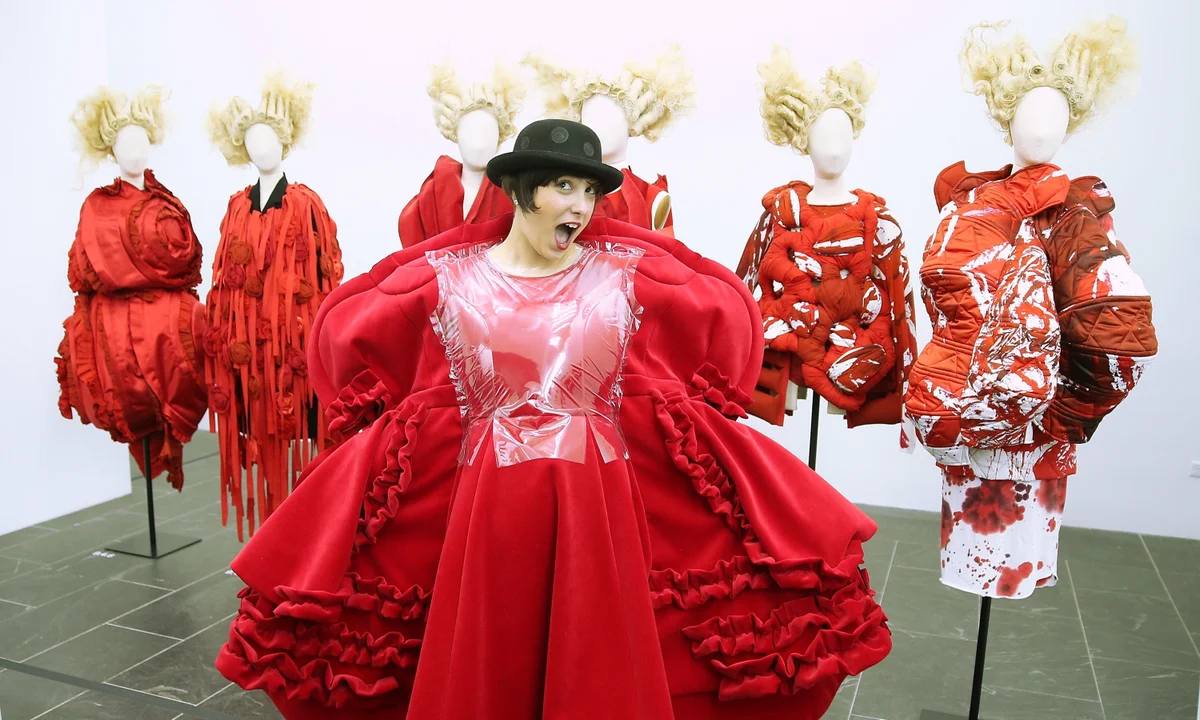Comme des Garçons, a fashion label born in Japan and revered worldwide, occupies a unique place in the global style landscape. Established by visionary designer Rei Kawakubo in 1969, the brand has consistently challenged the boundaries of fashion with its avant-garde concepts, intellectual rigor, and subversive approach to beauty. Far more than a clothing brand, Comme des Garcons has become a philosophical movement, a testament to the power of design to provoke, question, and transform.
The Origins of a Fashion Revolution
Rei Kawakubo did not set out to follow a traditional path into fashion. She studied fine arts and literature at Keio University before working in advertising for a textile company. Her dissatisfaction with existing clothing options inspired her to start designing garments under the name Comme des Garçons, meaning “like boys” in French. The name hinted at a rejection of conventional femininity and a preference for neutrality, strength, and structure.
By 1973, Comme des Garçons had officially become a company, and Kawakubo’s all-black, deconstructed clothing quickly gained a cult following in Tokyo. The brand’s early popularity reflected a growing cultural appetite for alternative aesthetics, defined by asymmetry, raw edges, and architectural silhouettes.
The 1981 Paris Debut: A Line in the Sand
The global fashion establishment was forced to pay attention in 1981 when Comme des Garçons debuted in Paris. The show was a shock to audiences accustomed to glamour and luxury. Models appeared in oversized, distressed garments, blacked-out ensembles, and flat shoes — a stark contrast to the dominant trends of the era.
Western critics called it “Hiroshima chic,” dismissing the collection as deliberately anti-fashion or even hostile. Meanwhile, supporters recognized groundbreaking creativity in Kawakubo’s designs. That moment set the tone for how Comme des Garçons would forever exist: a brand destined to disrupt expectations, whether embraced or misunderstood.
A Philosophy of Imperfection
One of Kawakubo’s core principles is the beauty of imperfection. Concepts such as wabi-sabi — the Japanese appreciation for impermanent and incomplete forms — are deeply embedded in her work. Comme des Garçons garments frequently feature unusual proportions, unfinished hems, intentional asymmetry, and silhouettes that conceal rather than reveal the body.
Kawakubo has said she designs not to please but to provoke thought. Her vision prioritizes the idea behind the garment rather than CDG Hoodie its commercial viability. Fashion critics have credited her with transforming clothing into a medium of intellectual discourse.
Key Collections That Shaped the Brand’s Legacy
Over the decades, Comme des Garçons has produced numerous iconic collections, each expressing a radically different concept:
- Destroy Collection (1982): Ripped knits and distressed fabrics challenged luxury’s traditional polish.
- Body Meets Dress, Dress Meets Body (1997): Nicknamed “lumps and bumps,” this collection altered body shapes with padded distortions, defying beauty standards.
- White Drama (2012): Sculptural white pieces explored life’s ritualistic moments: birth, marriage, and death.
- Invisible Clothes (2017): Outrageously voluminous and sculptural looks examined fashion beyond wearable function.
Each show operates almost like performance art — a conceptual statement rather than a mere presentation of seasonal styles.
Comme des Garçons’ Diffusion Lines and Collaborations
While the main runway collections serve as Kawakubo’s laboratory of ideas, Comme des Garçons has expanded into a constellation of lines that reach broader audiences:
- Comme des Garçons Play: Known for its iconic heart logo designed by artist Filip Pagowski. More casual and accessible.
- Comme des Garçons Homme and Homme Plus: menswear lines with their own distinct direction.
- Comme des Garçons Noir, Girl, SHIRT, and others, each exploring specific design languages.
The brand also has a rich collaboration history that connects it to streetwear and pop culture. Its partnership with Nike, especially the Dunk and Air Force silhouettes, blurred the lines between luxury and sneaker culture. Similarly, collaborations with Converse, Supreme, and Stussy helped redefine how avant-garde designers engage with mass audiences.
Retail as Conceptual Experience
In 2004, Kawakubo introduced the guerrilla store, temporary retail locations in unexpected places, often using raw interiors and minimal branding. This innovation completely reimagined high-fashion retail, emphasizing accessibility and spontaneity over exclusivity and glamour.
Even the brand’s flagship stores are uniquely artistic. The Dover Street Market retail concept, co-created with her partner Adrian Joffe, functions as a curated marketplace where fashion, art, and culture converge. Its installations change regularly, creating a dynamic, ever-evolving environment: comme-des-garcons.uk
Fragrance: Extending the Avant-Garde
Comme des Garçons fragrances continue the brand’s experimental ethos. Rather than focusing on sweetness or florality, scents often draw from unconventional inspiration — ink, tar, metal, and even the smell of photocopiers. The result is a series of olfactory experiences that reflect the same disruptive energy found in the clothing.
The 1994 release of Comme des Garçons Parfum marked the start of a widely respected fragrance division, and today the brand’s perfume collection is celebrated by scent enthusiasts for its bold originality.
Rei Kawakubo: The Enigmatic Mind Behind the Brand
Kawakubo is notoriously private, rarely giving interviews and often refusing to explain her collections. Her craftsmanship and intellectual rigor, however, have made her one of the most influential designers in contemporary fashion.
The Legacy of Comme des Garçons
More than 50 years after its founding, Comme des Garçons continues to occupy a unique position in the industry. The brand does not follow trends, chase hype, or rely on celebrity endorsement — yet its influence resonates across luxury houses and streetwear alike. Designers from Yohji Yamamoto to Martin Margiela, and more recently Demna Gvasalia and Rick Owens, share Kawakubo’s passion for innovation rooted in deep conceptual thinking.

